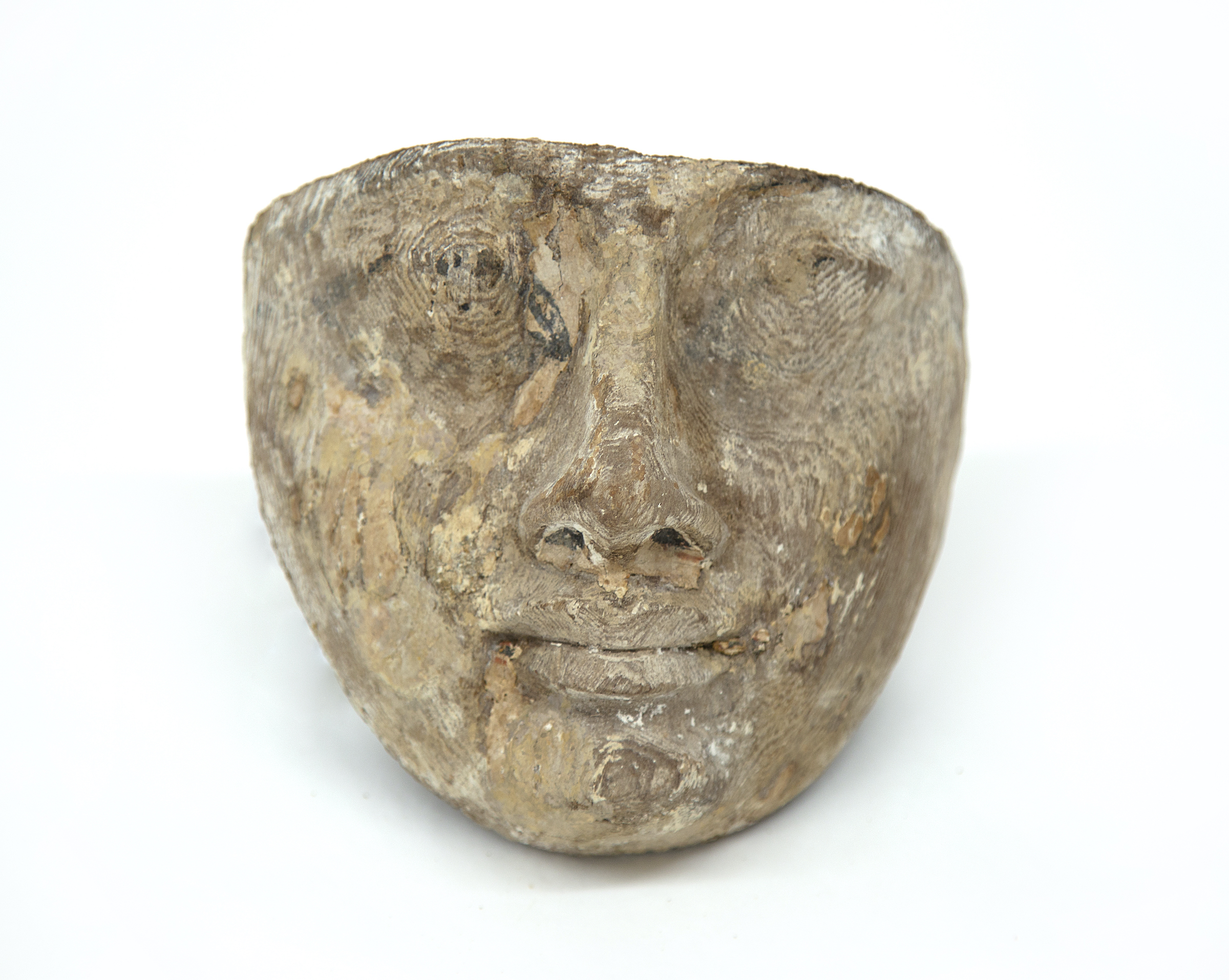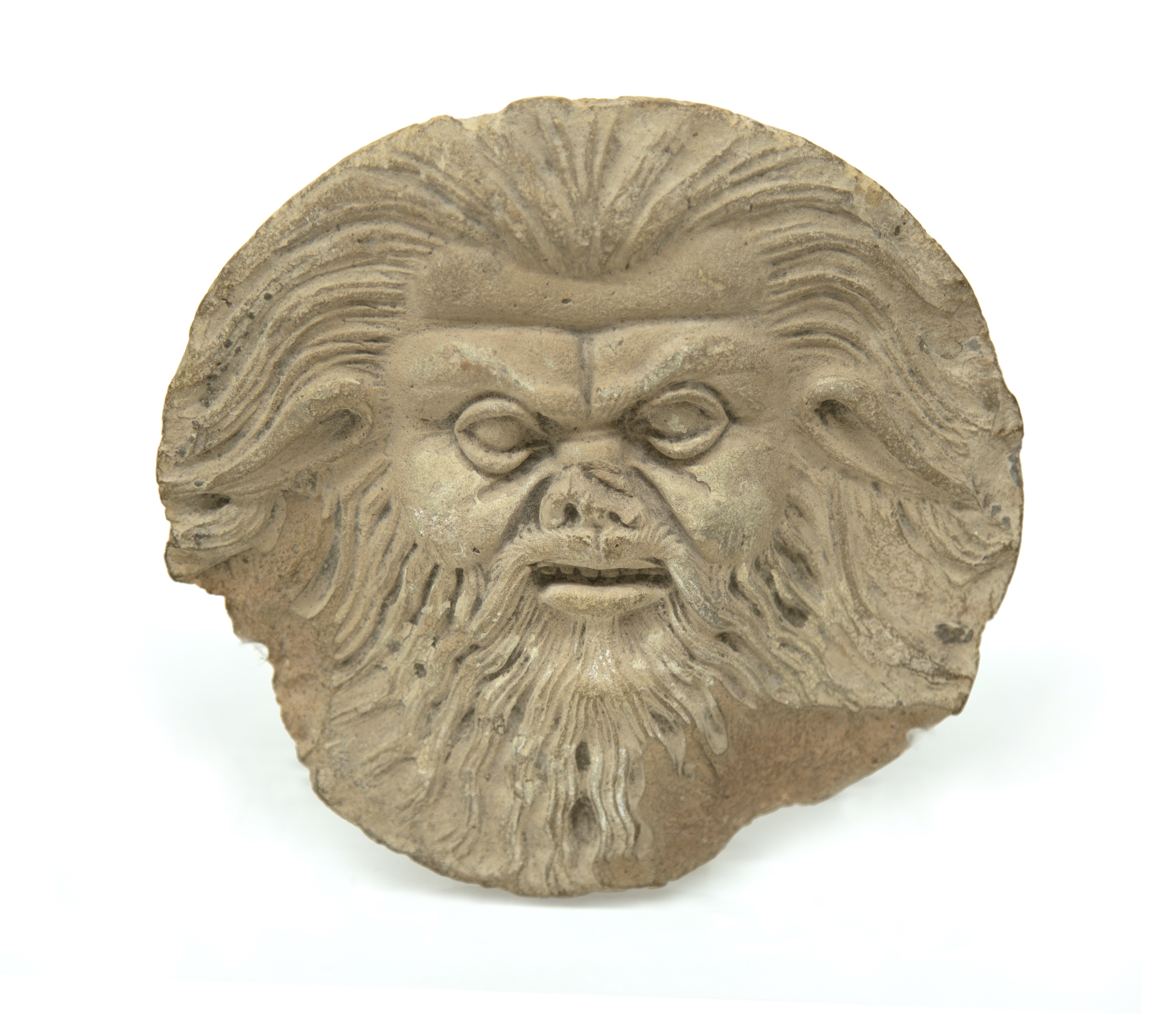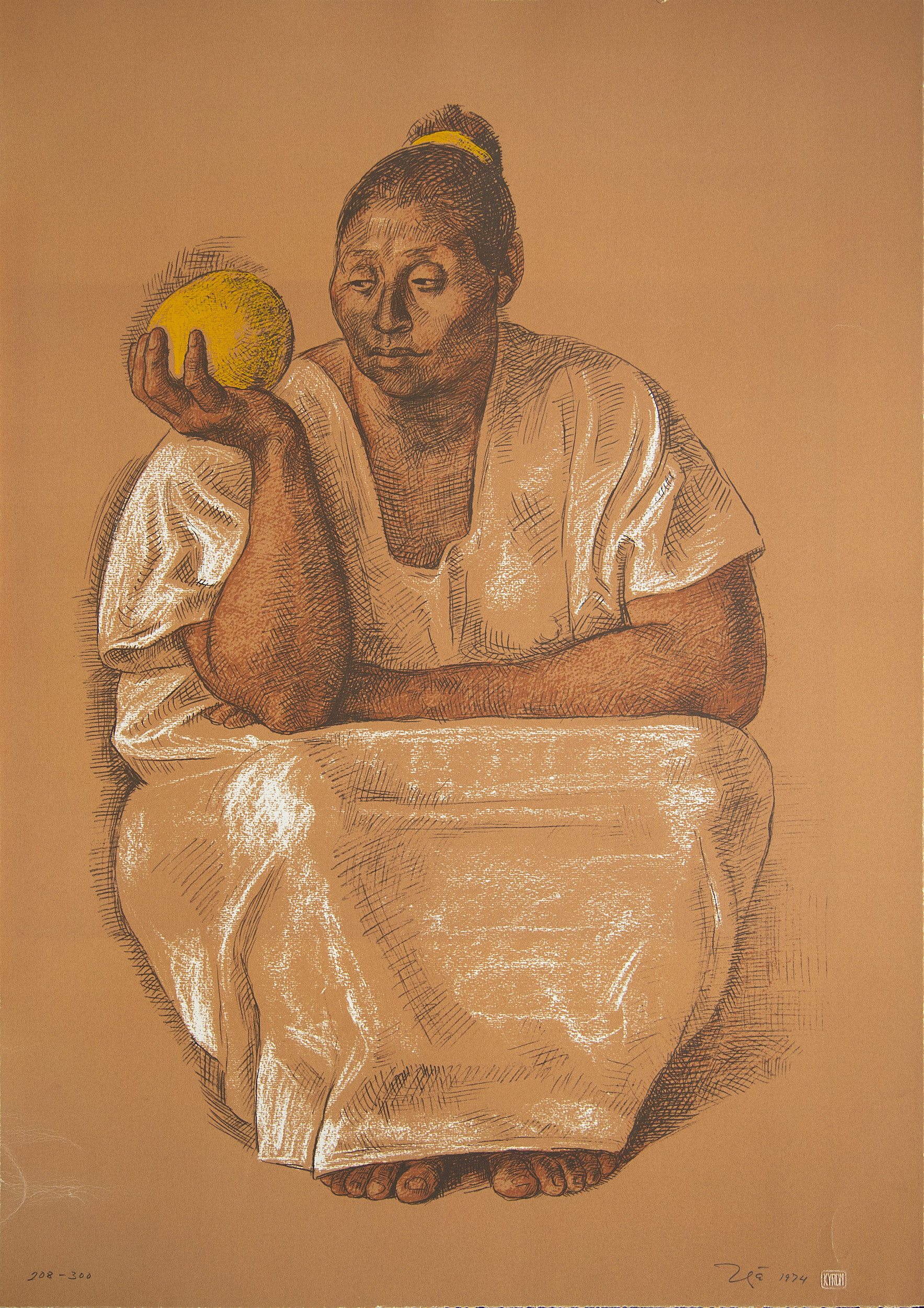The history of portraiture goes back as far in time as human history. Early fables such as the one of Narcissus, the youth who fell in love with his own reflection, illustrate our connection with being in terms of understanding ourselves and others. In all cultures, representations of the human countenance are central to art making and expression.
In antiquity and the early Christian world, naturalistic representations were found on statues and busts, coins, ceramics, wall paintings and mosaics. Roman encaustic burial portraits designated for the sarcophagi of the dead exhibited high degrees of individuality and realism. The diminutive features of the “Funerary Head” from Syria-Palmyra, convey a timeless quality and a larger-than-life presence. A contemporary work, Zúñiga’s Yucateca Con Fruta, suggests the solidity and universality of the figure, as if the globe-like fruit in its hands echoes the cosmos.
Funerary Head, Syria-Palmyra | Mask of Silenus | Attic Head Vase in Form of Female Head | Francisco Zúñiga | Five Figures, Pre-Colombian
Funerary Head, Syria-Palmyra, c. 1365 – 200 BC
Carved and painted wood
Gift of Syril and Walter Frank, 92.6.3
Mask of Silenus, Southern Italy, Magna Grecia, Archaic, 5th c. BC
Terracotta
Gift of Elie Borowski, 57.6
Attic Head Vase in form of female head, Classical, 500-450 BC
Terracotta, glazed
Gift of Leon Pomerance, 57.29
Francisco Zúñiga
Yucateca Con Fruta, 1974
Serigraph
Gift of Argosy Partners, 79.5.10
Five Figures, Pre-Columbian
Terracotta
Gift of Edward P. and Anita B. Quander, 2019.3.4 – 8
Images by Jacqui Hopely Monkell





